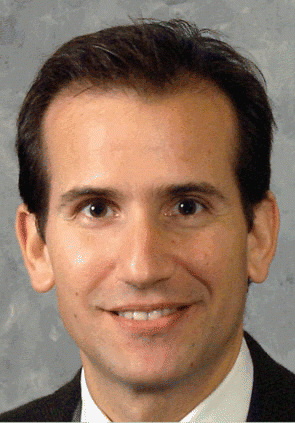The big issue is how to analyze what you are looking at, said Dr. Altman, adding that it requires clinical acumen to be able to differentiate the type of lesion and source of problem amid all the detail provided by videostroboscopy. Added to this challenge is deciding what the appropriate nomenclature is for a given lesion-should it be called a polyp, a nodule, a cyst?
Explore This Issue
January 2009To prove his point, Dr. Altman asked each member of the panel-experienced users of videostroboscopy-to provide his or her assessment of stroboscopy findings on a number of visual examples he provided in his slide presentation. There was some discussion of different interpretations, and the overall point was that even for experienced users of stroboscopy, correct analysis of the lesions can be difficult.
Yolanda D. Heman-Ackah, MD, an otolaryngologist at Drexel University College of Medicine in Philadelphia, who moderated the session, agreed that the most difficult part of using stroboscopy is understanding which observed pathology is causing the patient’s voice complaint.
To help otolaryngologists use this instrument, Dr. Heman-Ackah emphasized the importance of a thorough history prior to its use. Otolaryngologists need to listen to the patient’s complaints thoroughly and have a keen understanding of the details of the voice complaint prior to performing the stroboscopy, she said. This will allow the otolaryngologist to develop a differential diagnosis prior to performing the stroboscopy and to use the findings to confirm or deny these diagnoses.
Donna Lundy, PhD, Co-Director of the Vocal Disorders Laboratory in the Department of Otolaryngology at the University of Miami Leonard M. Miller School of Medicine, also emphasized that stroboscopy should be considered one of many components of a comprehensive voice evaluation and that interpretation of the results should be in conjunction with the rest of the evaluation.
Along with providing details about vocal fold vibrations, she also discussed the advantage of stroboscopy in providing better details about glottal closure. For example, she emphasized the benefit of knowing the degree of incomplete glottal closure, as that helps to determine whether the problem can be improved with voice therapy alone or if surgery is needed.
 It is educational to show people what their vocal folds look like so they can understand, for example, what surgery can do for them. They therefore are more invested in the treatment plan by seeing what the problem is.
It is educational to show people what their vocal folds look like so they can understand, for example, what surgery can do for them. They therefore are more invested in the treatment plan by seeing what the problem is.
-Kenneth W. Altman, MD, PhD
Ready for Prime Time?
For Dr. Altman, who specializes in voice and swallowing problems, videostroboscopy is an essential tool in his practice. He thinks that, to date, most people currently using videostroboscopy are those with a special interest in the voice. These specialists are investing not only in the new technology, he emphasized, but also in the educational process needed to support the use of the technology. This lifelong learning, he said, represents what most otolaryngologists are devoted to.
Leave a Reply